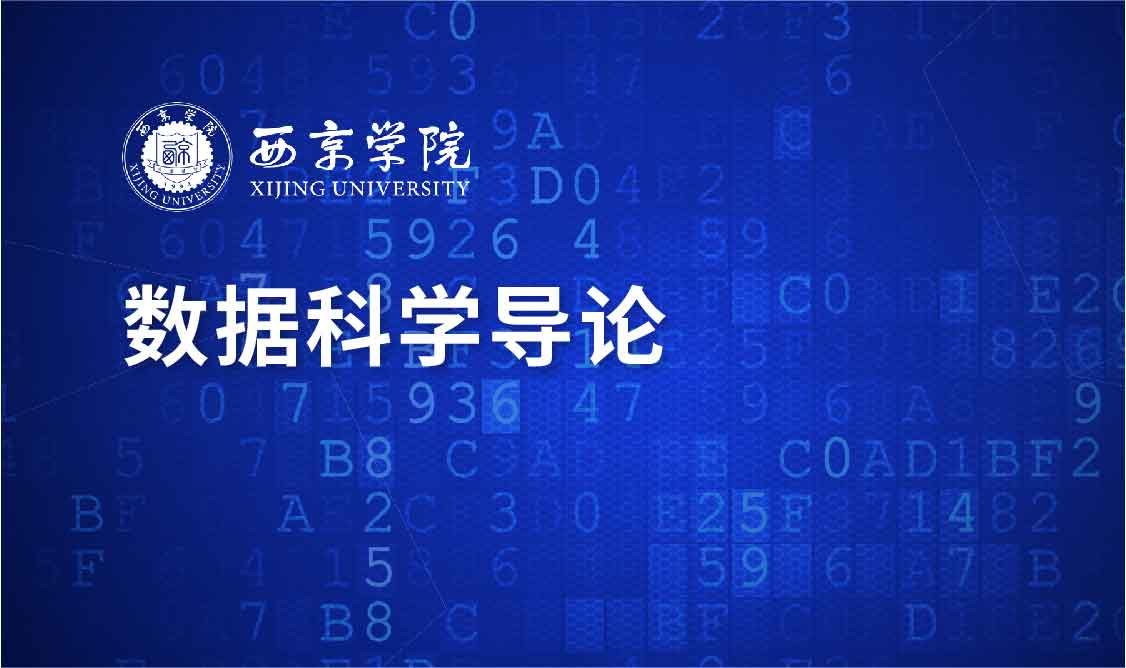
当前课程知识点:Learn Statistics with Ease > Chapter 5 Statistical Index > 5.5 Transformative Aggregate Index (Mean value index) > 5.5.1 Average index: compare first and then comprehensive (1) 平均数指数:先对比后综合(一)
返回《Learn Statistics with Ease》慕课在线视频课程列表
返回《Learn Statistics with Ease》慕课在线视频列表
同学们 大家好
Hello, everyone
欢迎回到课堂
Welcome back to class
接下来我们学习
Now let's begin
指数第四讲的内容
The fourth lesson about indexes
平均数指数
Average Number Indexes
主要包括下面四个内容
It mainly includes the following four contents
综合指数的缺陷
Defects of Composite Indexes
平均数指数的概念
Concept of Average Number Index
综合指数变形的平均数
Average Number Indexes Transformed from Composite Indexes
以及它所形成的指数体系
And their index system
首先我们来了解一下
First of all, let's get to know
综合指数的缺陷
The defects of composite indexes
首先回忆一下
Now just remember
上两讲综合指数的介绍里面
The compilation of composite indexes
关于综合指数的编制
In the introduction of composite indexes that we learned in the last two lessons
我们是先综合
We adopted the idea of
后对比的思路
"synthesis before comparison"
需要用到的总量有这么几个
The sums to be used include
有∑p{\fs9}1{\r}q{\fs8}1{\r}
∑p{\fs9}1{\r}q{\fs8}1{\r}
有∑p{\fs8}0{\r}q{\fs8}0{\r}
And ∑p{\fs8}0{\r}q{\fs8}0{\r}
这两个是
Of these two
一个是报告期的销售额总量
One is the total sales amount in the report period
一个是基期的销售额总量
And the other is the total sales amount in the base period
这个数据一般在实际工作里面
This data is usually easy to collect
是比较容易采集的
In the actual work
而在数量指数的计算里边
However, in the calculation of a quantity index
∑q{\fs9}1{\r}p{\fs8}0{\r}这是一个假想的
∑q{\fs9}1{\r}p{\fs8}0{\r} is an assumed
营业额或者销售额
Turnover or sales amount
它是用基期的价格
It is obtained by multiplying the price in the base period
乘了报告期的数量
By the quantity in the report period
而这个数字在实际工作里面
And this number is hard to collect
是很难采集到的
In the actual work
这样在计算综合指数的时候
So when calculating a composite index
可能就会面临一个问题
We may have a problem
由于数据比较难采集
Because the data is difficult to collect
而使得我们的编制的难度增加
It makes our compilation more difficult
第二一个
Second,
如果我们不是直接收集∑q{\fs9}1{\r}p{\fs8}0{\r}
If we don't collect ∑q{\fs9}1{\r}p{\fs8}0{\r} directly
也就是说不是直接收集这个
That is to say, we do not directly collect
假想时期的营业额
The turnover or sales amount data
或者销售额的资料的时候
In the assumption period
那么我们就必须要收集
Then we have to collect
p{\fs8}0{\r} p{\fs8}1 {\r}q{\fs8}0 {\r}q{\fs8}1{\r}
这样的全面的数据
Such comprehensive data
当然这样的全面的数据
Of course, in order to collect such comprehensive data
在实际调查工作里面
In the actual investigation
它的工作量无疑是非常的巨大的
The workload is undoubtedly very huge
这也是一个难题
This is also a problem
因此我们有可能对综合指数的缺陷
Therefore, it is possible for us
去进行一些改进
To make some improvements in the defects of composite indexes
来使得我们的工作更容易开展一些
So as to make our work easier
这样就导出了
In this way, the data is exported
我们接下来平均数指数
Next, let's take a look at average number indexes
平均数指数它是指
An average number index refers to
在个体指数的基础上
A general index obtained by averaging the individual indexes
将个体指数加以平均求得的总指数
Based on individual indexes
所以它仍然属于总指数的范畴
So it still belongs to a general index
只不过在计算指数的过程里面
Nothing but in the process of calculation
采用了平均的方法来计算
It is averaged
通常情况下
Under normal conditions
平均数指数可以分成两类
Average number indexes can be classified into two categories
一类是由综合指数
One is the average number indexes
变形得到的平均数指数
Transformed from composite indexes
另外就是独立形式的平均数指数
The other is the independent forms of average number indexes
在这一讲里面
In this lesson
我们主要介绍的是
We mainly introduce
综合指数变形的平均数指数
The average number of indexes transformed from composite indexes
接下来我们来看下一个知识点
Next, let's come to the next knowledge point
综合指数变形的平均数指数
Average Number Indexes Transformed from Composite Indexes
平均数指数计算的特点是
The principle of calculation of average number indexes is
先对比后综合
Comparison before synthesis
按照我们前面的定义
According to our previous definition
就先有一个个体指数
There are individual indexes first
那个体指数的计算
About the calculation of individual indexes
我们前面也提过
As we mentioned earlier
它是先用(字符如上)
We use (character as above)
+
或者是(字符如上)
Or (character as above)
得到个体指数
To obtain these individual indexes
然后再采用平均的方法
And then we synthesize them
将它综合起来
By the average method
变成一个总指数
Into a general index
稍候我们就来具体地看
Later we'll see in detail
它的先对比后综合
Where is comparison before synthesis
体现在哪里
Reflected
我们仍然使用上两讲里面
We still take Tmall’s product data
天猫商城“双十一”和“双十二”的
On November 11 and December 12 that I said in the last two lessons
商品的数据作为例子
For example
来展开对平均数指数编制的学习
To learn the compilation of average number indexes
不过这一次我采集的数据
But this time the data I collected
从形式上跟刚才前面的
Is different in form
有所不同
From what I said earlier
大家可以看表格里面的数字
You can see the numbers in the table
从表格里面提供的信息来看
From the information provided in the table
我直接给了p{\fs8}0{\r}q{\fs8}0{\r}
I directly tell the combination of p{\fs8}0{\r}q{\fs8}0{\r}
以及p{\fs8}1{\r}q{\fs8}1{\r}的组合
And p{\fs8}1{\r}q{\fs8}1{\r}
也就是说
In other words
我直接收集到了
I have directly collected
销售额或者是营业额的数据
The sales amount or turnover data
当然p{\fs8}0{\r}q{\fs8}0{\r}代表的
Of course, p{\fs8}0{\r}q{\fs8}0{\r} represents
就是“双十一”的数据
The data on November 11
而p{\fs8}1{\r}q{\fs8}1{\r}代表的就是“双十二”的数据
And p{\fs8}1{\r}q{\fs8}1{\r} represents the data on December 12
这样的数字在网站里面
These numbers are relatively easy
或者在实际的情况里面
To collect from websites
它收集起来难度相对来说要小
Or in actual situations
为了完成平均数指数的编制
To complete the compilation of an average number index
我还给出了k{\fs8}p{\r}
I also tell k{\fs8}p{\r}
注意是小写的
Please note that it's lowercase
是什么意思
What does it mean?
对 个体的销售价格指数
Yes, the individual sales price index
还有小写的k{\fs8}q{\r}
Besides, lowercase k{\fs8}q{\r}
也就是个体的销售量指数
That is, the individual sales volume index
这些数据给出以后
After these data are presented
我们就可以利用它们来进行
We can use them
平均数指数的编制
To compile the average number index
首先我们来看
First of all, let's see
总变动指数
The general change index
在这个体系里面
In this system
我们首先仍然可以分析
We can still analyze
天猫“双十二”和“双十一”相比
By comparison
它的营业额发生了怎样的变化
The changes in Tmall's turnovers on November 11 and December 12
那营业额采集的时候
When collecting the turnover data
报告期我已经给大家数据了
I have presented you with both the data of the report period
基期的数据也已经给大家了
And the data of the base period
遇到了什么难题吗
Are there any difficulties
没有 因此在总变动指数的编制中
No, so in the compilation of general change indexes
并不需要进行变形
You needn't make any transformation
并不需要进行特别地处理
Or do any special treatment
因为数据在现实生活里面
Because in real life the data
它是好收集的
Is easy to collect
因此总变动指数的计算
The calculation of general change indexes
和前面综合指数的计算
And the calculation of composite indexes mentioned above
并无差别
Are same
仍然是(字符如上)
Still (character as above)
等于88.05%
Equal to 88.05%
依然是下降了11.95%
Still a drop of 11.95%
从绝对量上面来看
In terms of absolute quantity
依然用报告期的营业额
We still subtract the turnover in the base period
减去基期的营业额
From the turnover in the report period
还是减少了295718元
Obtaining a reduction of 295,718 yuan
因此在总变动指数的计算过程里面
So in the calculation of a general change index
无论是综合指数还是平均数指数
Whether it's a composite index or an average number index
它的方法都是统一的
The method is unified
这也是我们为什么要把它
That's why we classify them
单列一类的原因
Into a single category
好 总变动指数计算完了以后
OK, after calculation of the general change index
我们接下来来计算销售量总指数
Next, let's calculate the general sales volume index
也就是数量指标指数
That is, the quantity index
数据依然在表格里面
The data is still shown in the table
那么我们接下来
So then let's
来看一下
Take a look at
销售量总指数在计算的时候
What problems will we encounter
它会遇到什么样的问题呢
When calculating the general sales volume index
我们以拉氏销售量指数为例子
Take the Laspeyres sales volume index as an example
来进行分析
To analyze
拉氏销售量指数
The Laspeyres sales volume index
(字符如上)
(Character as above)
拿到这个式子以后
After getting this formula
我们就可以回到刚才表格里面
We can go back to the table mentioned above
我们发现∑p{\fs8}0{\r}q{\fs8}0{\r}
We find
已经有现成的汇总好的数据
Existing summary data on ∑p{\fs8}0{\r}q{\fs8}0{\r}
而∑q{\fs8}1{\r}p{\fs8}0{\r}由于没有原始的数据
While there is no original data on ∑q{\fs8}1{\r}p{\fs8}0{\r}
这一次我没有办法通过
So this time I can't calculate the turnover
某一种商品
Of each commodity in this assumption period first
先计算这个假想时期的营业额
And then summarize them
然后汇总来完成这个计算
To complete the calculation
所以我一定要将
So I must
拉氏指数的分子来进行变形
Transform the molecule of Laspeyres index
变形的时候
When transforming it
我们可以有这样的两条思路
We can have two ideas
第一条思路是
The first idea is
我将∑q{\fs8}1{\r}p{\fs8}0{\r}
To transform ∑q{\fs8}1{\r}p{\fs8}0{\r}
变形到∑q{\fs8}0{\r}p{\fs8}0{\r}上来
to ∑q{\fs8}0{\r}p{\fs8}0{\r}
因为∑q{\fs8}0{\r}p{\fs8}0{\r}我是已经有
Because I have
收集好的数据
Collected data on ∑q{\fs8}0{\r}p{\fs8}0{\r}
总量也有
And their sum
每一种商品的p{\fs8}0{\r}q{\fs8}0{\r}也是有的
And also p{\fs8}0{\r}q{\fs8}0{\r} for each product
那么我怎么样可以实现
Then how can I achieve
从∑q{\fs8}1{\r}p{\fs8}0{\r}到∑q{\fs8}0{\r}p{\fs8}0{\r}
The transformation from ∑q{\fs8}1{\r}p{\fs8}0{\r} to ∑q{\fs8}0{\r}p{\fs8}0{\r}
这个里边最关键的一点是
The key point here is
要用q{\fs8}0{\r}去置换q{\fs8}1{\fs18}对不对{\r\fs8}
To replace q{\fs8}1{\fs18} with q{\fs8}0{\r}, right, {\r\fs8}
因此这个地方
So here
我也要找一个桥梁
I'm looking for a bridge
能把q{\fs8}1{\r}和q{\fs8}0{\r}联系起来
To connect q{\fs8}1{\r} and q{\fs8}0{\r}
会是谁呢
What will it be
想一想
Think about it
我们前面是不是介绍过
As we introduced earlier
可以将q{\fs8}1{\r}和q{\fs8}0{\r}联系起来的桥梁
A bridge connecting q{\fs8}1{\r} and q{\fs8}0{\r}
没错 大家可能都已经想到了
Yes, you may have already thought of it
它就是小写的k{\fs8}q{\r}
It's lowercase k{\fs8}q{\r}
也就是个体的销售量指数
That is, the individual sales volume index
那个体的销售量指数
And, Individual Sales Volume Index
它不是等于q{\fs8}1{\r}除以q{\fs8}0{\r}
= q{\fs8}1{\r} ÷q{\fs8}0{\r}
因此我们很快得到
So we'll get it soon
(字符如上)
(Character as above)
这就意味着
That means
我可以将∑q{\fs8}1{\r}p{\fs8}0{\r}
I can transform ∑q{\fs8}1{\r}p{\fs8}0{\r}
变形成∑k{\fs8}q{\r}q{\fs8}0{\r}p{\fs8}0{\r}的形式
Into ∑k{\fs8}q{\r}q{\fs8}0{\r}p{\fs8}0{\r}
来把其中的q{\fs8}1{\r}置换成q{\fs8}0{\r}
To replace q{\fs8}1{\r} with q{\fs8}0{\r}
这样转换以后
After this transformation
我们的式子里面就不再含有q{\fs8}1{\r}
Our formula no longer contains q{\fs8}1{\r}
我们的资料的收集
Our data collection
也就相对来说
Is relatively
要容易一些了
Easy
第二条路径
According to the second idea
我也有可能将∑q{\fs8}1{\r}p{\fs8}0{\r}变形为
I may also transform ∑q{\fs8}1{\r}p{\fs8}0{\r} into
∑q{\fs8}1{\r}p{\fs8}1{\r}
因为报告期的资料
As for the data in the report period
不论是总量还是每一种商品的
Whether it is the sum
营业额或销售额
Or the turnover or sales amount of each commodity
我们也是已经采集到的
We've also collected it
同样的思路
With the same idea
这一次我只需要将p{\fs8}0{\r}置换成p{\fs8}1{\r}
This time I just need to replace p{\fs8}0{\r} with p{\fs8}1{\r}
就可以了
That's it
对的
Right
我们依然要引入一个桥梁
We still need to introduce a bridge
这一次的桥梁就是小写的k{\fs8}p{\r}
This time the bridge is lowercase k{\fs8}p{\r}
个体销售价值指数
Individual sales value index
经过变形(字符如上)
By transformation (character as above)
把它代入到我们的式子里面
We put it in our formula
就可以得到∑q{\fs8}1{\r}p{\fs8}0{\r}
To obtain ∑q{\fs8}1{\r}p{\fs8}0{\r}
也可以转换成(字符如上)
It can also be transformed into (character as above)
注意这个写法∑是在最外面的
Please note that ∑ is outermost
注意这个写法
So pay attention to its writing
而且要说明的一点是
Besides, one thing to note is
在我的所有的符号里边
In all my symbols
i下标都是省去的
Subscript i is omitted
也就是我的商品的变化
That is to say, the change in my product
我都是省去的
Is omitted
大家要注意观察到这一点
You should pay attention to this
大家不要一看
When you see
这个∑外面没有一个i
There's no i outside ∑
这个p{\fs8}0{\r}q{\fs8}0{\r}是不是都是同样的
Don't think this p{\fs8}0{\r}q{\fs8}0{\r} is all the same
一定要时刻注意这个问题
You should always pay attention to this
回到刚才的变形上面来
Go back to the transformation mentioned just now
既然现在我已经将∑q{\fs8}1{\r}p{\fs8}0{\r}
Now that I have transformed ∑q{\fs8}1{\r}p{\fs8}0{\r}
置换成了两个不同的形式
Into two different forms
它的数据资料都是好收集的
Its data is easy to collect
那么接下来我就可以把它往
Then I can substitute it back to
拉氏指数里面来回代
The Laspeyres index
接下来我们来看一下
Let's take a look at
刚才变形后的两个式子
What results will be formed
回代以后会形成什么样的结果
After the two formulas transformed just now are substituted
首先我们来看第一个
First of all, let's look at the first one
第一个我们是通过引入k{\fs9}q{\r}
In the first one, we introduce q{\fs9}0{\r}
把q{\fs9}1{\r}置换掉
By replacing q{\fs9}1{\r}
而把q{\fs9}0{\r}引入进来
With k{\fs9}q{\r}
把它回代拉氏指数里面
And substitute it back to Laspeyres index
我们发现拉氏指数这一次变成了
Then we find that this time, the Laspeyres index has become
(字符如上)的形式
The form (character as above)
如果我们令(字符如上)
If we assume (character as above)
这个指数是不是可以变形成
Then this index be transformed into
(字符如上)的形式
The form (character above)
大家看看这个形式
Please take a look at this form
我们是不是很熟悉它呢
We are very familiar with it, aren't we
如果同学们已经想到
If you have thought of it
说明我们前面的知识
It shows our previous knowledge
学的还比较扎实
Has been well learned
它就是我们非常熟悉的
It's the calculation formula for arithmetic averages
算术平均数的计算公式是不是
That is very familiar to us
而且是加权的形式
And it is weighted
没错
Yes
它就是一个加权算术平均数的形式
It's in the form of the weighted arithmetic average
因此我们把这样形式的指数称之为
So we call this form of indexes
算术平均数指数
Arithmetic average number indexes
你就可以理解
You can understand
前面我们对平均数指数的定义了
The definition of an average number index we made above
它是将个体指数
It's a general index
怎么样
Obtained
进行算术平均以后所得到的总指数
By arithmetically averaging individual indexes
对不对
Isn't it?
所以它从形式上看起来
So it looks like
是(字符如上)
(Character as above)
那说明我们这条路的变换
That means by transformation under this idea
得到了我们想要的平均数指数的形式
We get the form of average number index we want
同样的我们把第二条路
Likewise, we substitute
置换的结果
The result of replacement under the second idea
也代回来看一看
Back to see
是不是它也会形成某种形式的
Whether it will also become a form of
平均数
Average
第二条路回代的结果是
Then the result of the back substitution is
我们把引入k{\fs8}p{\r}
We introduce k{\fs8}p{\r}
将p{\fs8}0{\r}置换成p{\fs8}1{\r}
And replace p{\fs8}0{\r} with p{\fs8}1{\r}
那看一下它代入进来以后
Well, let's see. After it is substituted
我们发现它从形式上变成了
We find that it has become a form of
(字符如上)
(Character as above)
这是我们的分子
This is our molecule
(字符如上)这是我们的分母
And this is our denominator
这个形式看起来
Which average
是哪个平均数
Does this form look like
大家观察一下
Let's see
是算术平均数吗
Is it an arithmetic average
好像不是
It seems not
看起来是不是有点像调和平均数
Does it look like a harmonic average
大家觉得
Do you think
像吗
So
也不是吧
Not either
虽然调和平均数在计算的时候
When a harmonic average is calculated
分子里面是有一个(字符如上)的构造
There is a structure (character as above) in its molecule
但是它下面的分母应该有一个
While the denominator below it should
信息跟分子是同的
Be same in part as it
但是我们看起来
But we find that
分子分母的构造里面
In the structure of molecular and denominator
没有哪一个部分是相同的
No part is same
对不对
Right
所以这条路看起来好像行不通
So this idea doesn't seem to work
对不对
Right
如果我们变形以后
If we need to transform it
要把它转换成平均数的形式
Into an average
那这个构造它看起来
Then this structure does not look like
并不是一个平均数
An average
既不是算术平均
It is neither an arithmetic average
也不是调和平均
Nor a harmonic average
因此我们只能说此路不通
Thus we can only say that this idea does not work
因此这两条思路我们最后总结
Therefore, we conclude these two ideas that
如果以拉氏指数作为基础
If the transformation
来进行转换的话
Is based on Laspeyres index
只有一条路看似行得通
Only one idea seems to work
那就是引入k{\fs8}q{\r}作为桥梁
That is to introduce k{\fs8}q{\r} as a bridge
将q{\fs8}1{\r}p{\fs8}0{\r}转换成q{\fs8}0{\r}p{\fs8}0{\r}
To transform q{\fs8}1{\r}p{\fs8}0{\r} into Q {\ fs8} q{\fs8}0{\r}p{\fs8}0{\r}
这样的话
In this case
我们就可以得到
We can get
算术平均数指数的形式
The form of arithmetic average number index
好 这是拉氏指数的变形得到的结果
OK, this is the result of the transformation of Laspeyres index
接下来我们利用表里面的数据
Next, we use the data in the table
来算一算这个数字
To calculate the number
在刚才表格里面
In the table
我们已经提供有
We have provided
每一种商品的q{\fs8}0{\r}p{\fs8}0{\r}
Both q{\fs8}0{\r}p{\fs8}0{\r}
也提供有每一种商品的k{\fs8}q{\r}
And k{\fs8}q{\r} for each product
注意观察黑板上的这个式子
Pay attention to the formula on the blackboard
打开以后
After decomposition
它是有五种不同的商品在相加
There are five different products added in it
这就是我刚才提醒大家
This is, as I just reminded you
那个i下标省略的地方
Where subscript i is omitted
所以一定注意到
So we must pay attention to it
每一种商品有一个k{\fs8}q{\r}
Each product has k{\fs8}q{\r}
每一种商品有一个p{\fs8}0{\r}q{\fs8}0{\r}
And each product has p{\fs8}0{\r}q{\fs8}0{\r}
对应相乘再求和得到的是总量
The sum can be obtained by multiplying the above two for each product and then summing overall results
这个总量对应的信息
What corresponds to the sum
就是我们前面那个假想时期的
Is turnover ∑q{\fs8}1{\r}p{\fs8}0{\r}
营业额∑q{\fs8}1{\r}p{\fs8}0{\r}
Of the assumption period we mentioned above
所以一定注意在计算的时候
So it must be noted that
是要这样来打开分解的
We should decompose the formula when calculating
那这个数字计算好了以后是
The number calculated is
2261659(元)
2,261,659 yuan
将计算好的这个假想时期的
Then after we put
营业额的资料
The calculated turnover of the assumption period
我们代入到算术平均数指数的
In the calculation formula
这个计算式子里边
For arithmetic average index
计算的结果是91.38%
The calculated result is 91.38%
说明销售量报告期和基期相比
It shows that compared with that in the base period, the sales volume in the report period
下降了8.62%
Drops by 8.62%
由于销售量下降
The drop in sales volume
使得营业额减少了213268(元)
Leads to a reduction of 213,268 yuan in turnover
这个数字很快就可以计算出来了
This number is calculated soon
那么接下来给大家一点点时间
Then I want to give you a little time
来思考一下
To think about this
如果我现在要你们对帕氏的
If I want you to transform
销售量总指数来进行变形
The Paasche general sales volume index
它会得到什么样的形式
Then what form will it get
大家拿出纸和笔来练一练
Please take out the paper and pen to practice
稍后来和我的对一下
And then check your analysis process with mine
看看大家有没有把刚才这个
To see if you've
基本原理掌握到
Mastered this fundamental principle
好 相信大家在纸上
OK, I believe
已经对刚才的帕氏销售量指数
You've already transformed
进行了一番变形
The Paasche sales volume index mentioned just now on paper
同样的有两条思路可以选择
Likewise, there are two ideas for your choice
是不是
Right
这一次要变形的是分母部分了
This time what we need to transform is the denominator
好 经过把变形以后的形式
Well, after putting the transformed form
代入进去
Into the formula
我们会发现
We'll find out
当我们把k{\fs8}q{\r}引入进来作为桥梁
When we introduce k{\fs8}q{\r} as a bridge
而把q{\fs8}0{\r}用q{\fs8}1{\r}置换以后
To replace q{\fs8}0{\r} with q{\fs8}1{\r}
得到的形式看起来是
The resulting form looks like
(字符如上)的形式
(Character as above)
那么这个形式的话
This form
和我们前面学过的加权调和平均数
Is same as
就是一样的了
The weighted harmonic average we learned earlier
因此如果我们对帕氏的销售量指数
So if we transform the Paasche sales volume index
进行变形它也可以得到一个
We can also obtain
平均数指数的形式
An average number index
只不过这一次
Only this time
你所得到的是一个
What we obtain is
加权的调和平均数指数的形式
A weighted harmonic average index
原理还是上一次的原理
The principle is still the same as that we took last time
如果是数量指标指数
If it's a quantity index
我们仍然常用拉氏指数来进行计算
We still use the Laspeyres index to calculate it
帕氏指数可行但是不常用
Paasche index is feasible but not commonly used
因此在这里
So here
调和平均数形式的销售量总指数
The general sales volume index in the form of harmonic average
也是不常用的
Is still not very common
好 这个练习到这里
OK, so much for the practice
大家对对看
Please check
是不是做好了
Whether you have finished it
通过这两个变形
Through these two transformations
我们可以稍微总结一下
We can make a simple summary
第一 我们要把不容易收集到的数据
First, we need to transform the data that is not easy to collect
朝指数里面已经存在的时期变形
To the period existing in the index
这样就能够得到
In this way we can obtain
某种形式的平均数指数
Some form of average number index
比如 如果我们指数里面已经存在
For example, if
∑p{\fs8}0{\r}q{\fs8}0{\r}
∑p{\fs8}0{\r}q{\fs8}0{\r} already exists in our index
那就想办法把另外一个
Then try to transform another data
不容易收集到的数据
That is hard to collect
转换成∑p{\fs8}0{\r}q{\fs8}0{\r}
Into the combination of ∑p{\fs8}0{\r}q{\fs8}0{\r}
和另外一个桥梁的组合
And another bridge
如果这个指数里面已经存在
If ∑p{\fs8}1{\r}q{\fs8}1{\r} already exists in this index
∑p{\fs8}1{\r}q{\fs8}1{\r}想办法把它朝这个方向转换
Then try to transform it into that
我想前面的两次变形
I think from the previous two transformations
你们已经观察到这一点
You've seen this point
第二一个
Second
我想你们也观察到的
As what you've also seen
就是引入的桥梁
The bridge introduced
它和指数化因素是相对应的
Corresponds to the indexing factor
我们发现不管是在拉氏指数的变形里边
We find that in the transformation of Laspeyres index
还是在帕氏指数的变形里边
Or Paasche index
如果要得到平均数指数的形式
If we want to get the form of the average number index
我们的桥梁都是k{\fs8}q{\r}而不是k{\fs8}p{\r}
Our bridge is all k{\fs8}q{\r} instead of k{\fs8}p{\r}
所以这两点我们可以做个检查
So we can check these two points
它可以防止你误入歧途
To prevent you from going astray
好 这是我们刚才在对
OK, this is the conclusion that we draw
数量指标指数变形所得到的小结论
From the transformation of quantity indexes
-1.1 Applications in Business and Economics
--1.1.1 Statistics application: everywhere 统计应用:无处不在
-1.2 Data、Data Sources
--1.2.1 History of Statistical Practice: A Long Road 统计实践史:漫漫长路
-1.3 Descriptive Statistics
--1.3.1 History of Statistics: Learn from others 统计学科史:博采众长
--1.3.2 Homework 课后习题
-1.4 Statistical Inference
--1.4.1 Basic research methods: statistical tools 基本研究方法:统计的利器
--1.4.2 Homework课后习题
--1.4.3 Basic concepts: the cornerstone of statistics 基本概念:统计的基石
--1.4.4 Homework 课后习题
-1.5 Unit test 第一单元测试题
-2.1Summarizing Qualitative Data
--2.1.1 Statistical investigation: the sharp edge of mining raw ore 统计调查:挖掘原矿的利刃
-2.2Frequency Distribution
--2.2.1 Scheme design: a prelude to statistical survey 方案设计:统计调查的前奏
-2.3Relative Frequency Distribution
--2.3.1 Homework 课后习题
-2.4Bar Graph
--2.4.1 Homework 课后习题
-2.6 Unit 2 test 第二单元测试题
-Descriptive Statistics: Numerical Methods
-3.1Measures of Location
--3.1.1 Statistics grouping: from original ecology to systematization 统计分组:从原生态到系统化
--3.1.2 Homework 课后习题
-3.2Mean、Median、Mode
--3.2.2 Homework 课后习题
-3.3Percentiles
--3.3 .1 Statistics chart: show the best partner for data 统计图表:展现数据最佳拍档
--3.3.2 Homework 课后习题
-3.4Quartiles
--3.4.1 Calculating the average (1): Full expression of central tendency 计算平均数(一):集中趋势之充分表达
--3.4.2 Homework 课后习题
-3.5Measures of Variability
--3.5.1 Calculating the average (2): Full expression of central tendency 计算平均数(二):集中趋势之充分表达
--3.5.2 Homework 课后习题
-3.6Range、Interquartile Range、A.D、Variance
--3.6.1 Position average: a robust expression of central tendency 1 位置平均数:集中趋势之稳健表达1
--3.6.2 Homework 课后习题
-3.7Standard Deviation
--3.7.1 Position average: a robust expression of central tendency 2 位置平均数:集中趋势之稳健表达2
-3.8Coefficient of Variation
-3.9 unit 3 test 第三单元测试题
-4.1 The horizontal of time series
--4.1.1 Time series (1): The past, present and future of the indicator 时间序列 (一) :指标的过去现在未来
--4.1.2 Homework 课后习题
--4.1.3 Time series (2): The past, present and future of indicators 时间序列 (二) :指标的过去现在未来
--4.1.4 Homework 课后习题
--4.1.5 Level analysis: the basis of time series analysis 水平分析:时间数列分析的基础
--4.1.6Homework 课后习题
-4.2 The speed analysis of time series
--4.2.1 Speed analysis: relative changes in time series 速度分析:时间数列的相对变动
--4.2.2 Homework 课后习题
-4.3 The calculation of the chronological average
--4.3.1 Average development speed: horizontal method and cumulative method 平均发展速度:水平法和累积法
--4.3.2 Homework 课后习题
-4.4 The calculation of average rate of development and increase
--4.4.1 Analysis of Component Factors: Finding the Truth 构成因素分析:抽丝剥茧寻真相
--4.4.2 Homework 课后习题
-4.5 The secular trend analysis of time series
--4.5.1 Long-term trend determination, smoothing method 长期趋势测定,修匀法
--4.5.2 Homework 课后习题
--4.5.3 Long-term trend determination: equation method 长期趋势测定:方程法
--4.5.4 Homework 课后习题
-4.6 The season fluctuation analysis of time series
--4.6.1 Seasonal change analysis: the same period average method 季节变动分析:同期平均法
-4.7 Unit 4 test 第四单元测试题
-5.1 The Conception and Type of Statistical Index
--5.1.1 Index overview: definition and classification 指数概览:定义与分类
-5.2 Aggregate Index
--5.2.1 Comprehensive index: first comprehensive and then compare 综合指数:先综合后对比
-5.4 Aggregate Index System
--5.4.1 Comprehensive Index System 综合指数体系
-5.5 Transformative Aggregate Index (Mean value index)
--5.5.1 Average index: compare first and then comprehensive (1) 平均数指数:先对比后综合(一)
--5.5.2 Average index: compare first and then comprehensive (2) 平均数指数:先对比后综合(二)
-5.6 Average target index
--5.6.1 Average index index: first average and then compare 平均指标指数:先平均后对比
-5.7 Multi-factor Index System
--5.7.1 CPI Past and Present CPI 前世今生
-5.8 Economic Index in Reality
--5.8.1 Stock Price Index: Big Family 股票价格指数:大家庭
-5.9 Unit 5 test 第五单元测试题
-Sampling and sampling distribution
-6.1The binomial distribution
--6.1.1 Sampling survey: definition and several groups of concepts 抽样调查:定义与几组概念
-6.2The geometric distribution
--6.2.1 Probability sampling: common organizational forms 概率抽样:常用组织形式
-6.3The t-distribution
--6.3.1 Non-probability sampling: commonly used sampling methods 非概率抽样:常用抽取方法
-6.4The normal distribution
--6.4.1 Common probability distributions: basic characterization of random variables 常见概率分布:随机变量的基本刻画
-6.5Using the normal table
--6.5.1 Sampling distribution: the cornerstone of sampling inference theory 抽样分布:抽样推断理论的基石
-6.9 Unit 6 test 第六单元测试题
-7.1Properties of point estimates: bias and variability
--7.1.1 Point estimation: methods and applications 点估计:方法与应用
-7.2Logic of confidence intervals
--7.2.1 Estimation: Selection and Evaluation 估计量:选择与评价
-7.3Meaning of confidence level
--7.3.1 Interval estimation: basic principles (1) 区间估计:基本原理(一)
--7.3.2 Interval estimation: basic principles (2) 区间估计:基本原理(二)
-7.4Confidence interval for a population proportion
--7.4.1 Interval estimation of the mean: large sample case 均值的区间估计:大样本情形
--7.4.2 Interval estimation of the mean: small sample case 均值的区间估计:小样本情形
-7.5Confidence interval for a population mean
--7.5.1 Interval estimation of the mean: small sample case 区间估计:总体比例和方差
-7.6Finding sample size
--7.6.1 Determination of sample size: a prelude to sampling (1) 样本容量的确定:抽样的前奏(一)
--7.6.2 Determination of sample size: a prelude to sampling (2) 样本容量的确定:抽样的前奏(二)
-7.7 Unit 7 Test 第七单元测试题
-8.1Forming hypotheses
--8.1.1 Hypothesis testing: proposing hypotheses 假设检验:提出假设
-8.2Logic of hypothesis testing
--8.2.1 Hypothesis testing: basic ideas 假设检验:基本思想
-8.3Type I and Type II errors
--8.3.1 Hypothesis testing: basic steps 假设检验:基本步骤
-8.4Test statistics and p-values 、Two-sided tests
--8.4.1 Example analysis: single population mean test 例题解析:单个总体均值检验
-8.5Hypothesis test for a population mean
--8.5.1 Analysis of examples of individual population proportion and variance test 例题分析 单个总体比例及方差检验
-8.6Hypothesis test for a population proportion
--8.6.1 P value: another test criterion P值:另一个检验准则
-8.7 Unit 8 test 第八单元测试题
-Correlation and regression analysis
-9.1Correlative relations
--9.1.1 Correlation analysis: exploring the connection of things 相关分析:初探事物联系
--9.1.2 Correlation coefficient: quantify the degree of correlation 相关系数:量化相关程度
-9.2The description of regression equation
--9.2.1 Regression Analysis: Application at a Glance 回归分析:应用一瞥
-9.3Fit the regression equation
--9.3.1 Regression analysis: equation establishment 回归分析:方程建立
-9.4Correlative relations of determination
--9.4.1 Regression analysis: basic ideas
--9.4.2 Regression analysis: coefficient estimation 回归分析:系数估计
-9.5The application of regression equation




